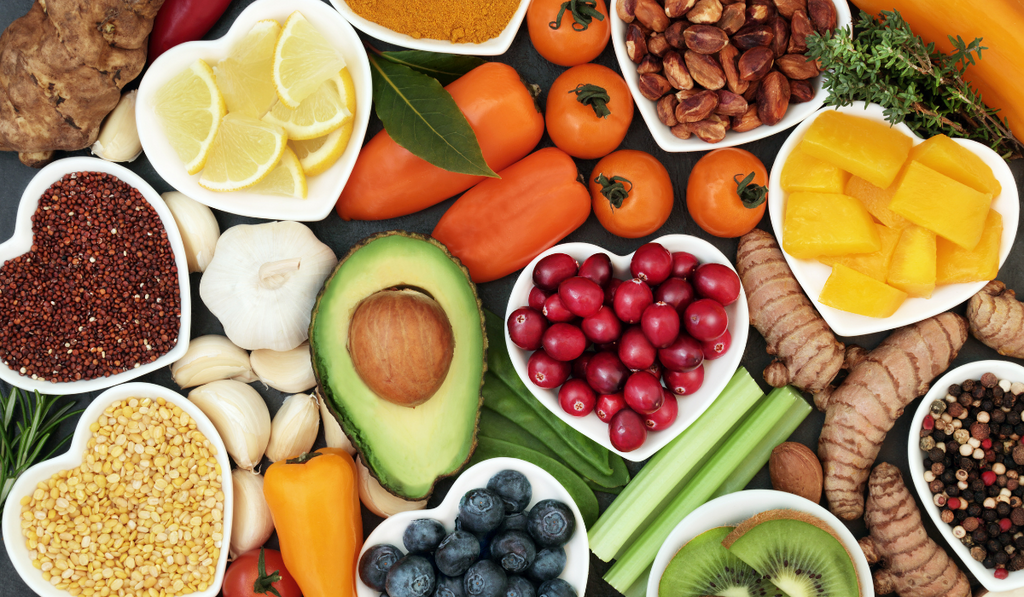What an Antioxidant Really Does: The Truth Behind the Buzzword

It’s safe to say you’ve heard about antioxidants. The buzzword abounds in the health and wellness industry, with antioxidant-rich foods and supplements suggested to supercharge one’s health.
Are antioxidants all they’re cracked up to be? How exactly do they work? Why are they important for healthy aging? Here we’ll take a deeper look at what antioxidants actually are and what they really do.
What Are Antioxidants?
Antioxidants are compounds that are shown to help reduce free radicals in the body and inhibit oxidative stress. The body produces its own antioxidants, including glutathione and alpha lipoic acid. Vitamins C and E are other well-documented antioxidants that can be attained through certain foods and/or supplements. There are also several plant antioxidants including ascorbic acid, polyphenols and terpenes that are found in a variety of fruits, herbs and vegetables.
Antioxidants were brought to mainstream attention in the 1990s when research discovered that free radical damage was linked to a variety of primarily aging-related health concerns—both on the surface and beneath the skin.
Studies revealed that individuals who consumed fewer antioxidant-rich fruits and vegetables had an increased risk of developing such concerns compared to those who consumed a diet rich in these foods.
To understand what an antioxidant actually does, it’s important to understand what free radicals are and how antioxidants work to reduce free radical damage.
Antioxidants, Free Radicals, Oxidative Stress, and Aging
Antioxidants are said to reduce or prevent free radicals throughout the body. What exactly are free radicals, though and how do they make their way into the body?
Free radicals are defined as uncharged molecules that contain an uneven number of electrons. They’re highly reactive because of the uneven electrons.
Free radicals are produced naturally in the body through a process known as metabolic oxidation. They play an integral role in normal physiological function and are used by cells in the body to destroy invading bacteria.
How do excessive toxins make their way into the body? They’re abundantly found in our everyday environment. The food we eat, the water we drink, the medicines we take, and the air we breathe can all generate the formation of free radicals in the body.
Some of the most common environmental toxins that can contribute to free radicals include air pollution, damaging UV rays, pesticides, and heavy metals. Diet and lifestyle also heavily influence the formation of free radicals in the body. Poor nutrition, smoking, alcohol and drug abuse can all contribute to free radicals.
When free radicals are formed, a domino effect can occur. The first free radical ends up taking away an electron from a molecule, ultimately weakening the molecule which turns into a free radical. This free radical molecule takes an electron from another molecule, which weakens this molecule and turns it into another free radical.
This chain reaction continues until the whole cell is damaged. The result of this domino effect is known as oxidative stress, eventually leading to the development of several adverse health concerns, many of which are associated with aging.
The big buzz about antioxidants is that they’re said to prevent and reduce free radical damage. How exactly does an antioxidant work?
What Antioxidants Actually Do
The word “antioxidant” is an overall term that refers to various compounds that can offset free radical molecules.
Remember when we said that free radicals contain uneven electrons? Antioxidants work by lending their own electrons to free radicals. By giving up their own electrons, they basically turn off free radicals. This helps stop that chain reaction that causes cell damage.
While most people think of antioxidants as foods or supplements, it’s the various compounds found in various foods or supplements that produce a chemical reaction within the body.
Studies do show that the best way to reap the benefits of antioxidants is by eating a diet rich in foods that contain them, such as berries, dark chocolate, dark leafy greens, beans, fruit, green tea and even CBD.
In fact, one of the earliest benefits of CBD that was well documented were its antioxidant properties—which were researched by the National Institutes of Health in 1999 and eventually led the US Government to seek a patent on CBD and a few minor cannabinoids.
Bottom line: the best way to ensure you’re getting the antioxidants your body needs to fight free radical damage is by consuming a diet full of antioxidant-rich foods, supplementing when necessary, and staying mindful of living a healthy lifestyle.

Newsletter signup
Join the Joy Organics Family
Sign up and get updates on new products, as well as special coupons and discounts.
testimonials
What Our Clients Say
“This is a company that truly cares about its customers and providing the best CBD products currently available on the market.”










Join In On The Conversation
Your email address will not be published. Required fields are marked *
Comments will be approved before showing up.